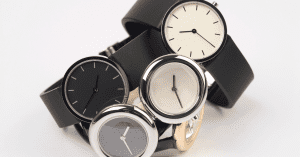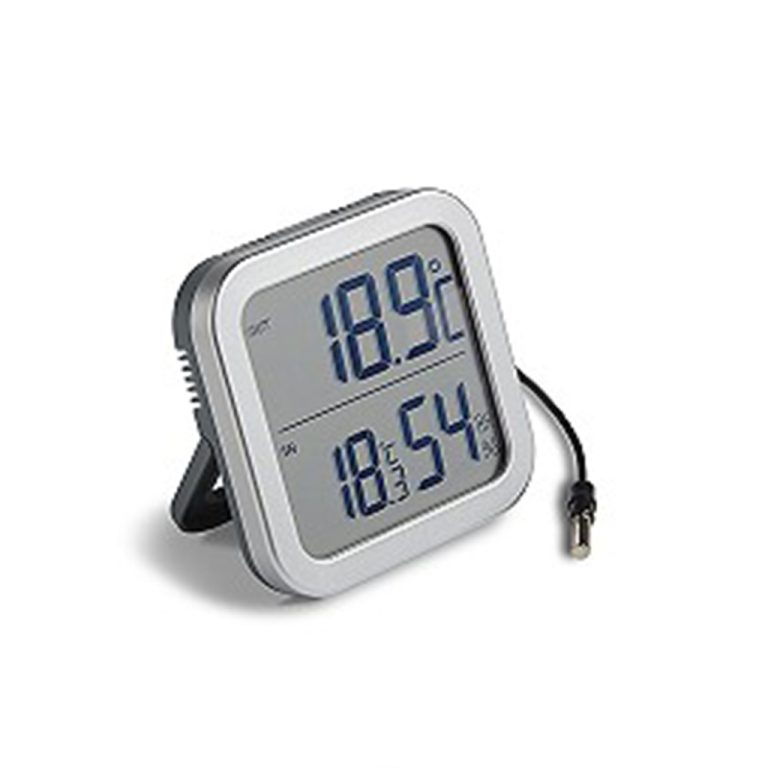Watches or chronographs as we know them haven’t actually been around that long. Before the time of the Rolex clocks were the time of clocks and sundials. Humanity has had ways of time keeping for thousands of years, but the concept of a portable clock is relatively recent.
In the late 15th and early 16th centuries, European clockmakers started watchmaking personal, portable clocks, such as the German. They called these creations clock watches, as they were a little bigger than what you know as a modern watch.
They acted as a transitory device between full-size clocks and watches that you could carry on your person. These devices were made possible by the invention of a part called the mainspring.
THE FIRST WATCHES
This invention was possible due to the creation of a watch part called the mainspring in the early 15th century. A mainspring is basically a wound up piece of metal ribbon that functions as the power source in mechanical watches and mechanical clocks.
When this was first invented, it was revolutionary, as clocks could be made much smaller and still keep time. The user just needed to wind the clock every so often in order to keep tension on the mainspring.
A clockmaker from Nuremberg named Peter Henlein is typically credited with inventing the very first watch. He created one of these “clock watches” in the 15th century. It’s important to note, though, that many other clockmakers were creating similar devices around this same time.
While Henlein is well-known as the first inventor of the watch, there is not actually any proof that he created the very first one.
THE POCKETWATCH
Not long after the invention of the first clock watches, consumers were looking for a new way to carry their timepieces. The original clock watches were typically worn as pendants around the neck, but as waistcoats began to become a popular part of men’s fashion, consumers wanted an option that they could keep in their coat pockets. They could watch the first and second hands to keep the time.
This led to the rise of the pocket watch. In addition to the convenience, it also helped keep their timepieces safe from weather and other damages.
Later on in the 1800s, Prince Albert created a new watch accessory called the Albert chain. This allowed men to carry their watches by attaching them to the pockets on the front of their coats.
FURTHER WATCH TECHNOLOGY DEVELOPMENTS
Over the next few hundred years, a variety of watchmakers began inventing different pieces that would make watches more accurate, accessible, and an overall higher-quality product. You can read more about how a mechanical (specifically an automatic watch) works here[link to how automatic watches work article.)
Each piece of the watch was developed over time through small advancements in technology. But despite all these changes, the modern men’s wristwatch was still nowhere to be seen.
Men would typically wear a pocket watch until the early 20th century, although women starting to adopt the wristwatch or bracelet watch much earlier. The earliest men’s wristwatches of the watch industry were less of a fashion statement and more of a tactical and wearable decision. As the watch movement progressed the watch manufacturers progressed towards the wristlet watch.
WHEN WAS THE WRISTWATCH INVENTED?
There is debate among the history of watches who actually created the first wristwatch, with some saying it was in the 16th century, others at the start of the 19th. Either way, at neither time was it an immensely popular piece of fashion.
According to the Guinness Book of World Records, the first official wristwatch was created for Countess Koscowicz of Hungary by Patek Philippe, a Switzerland based Swiss watchmaker in 1868. That’s debated among horologists, but the Swiss watch is one of the first we have a record of.
Women began to wear them regularly in the 19th century, but men didn’t really take to them until the start of the First World War. There are stories of Napoleon being frustrated by having to pull out his pocket watch to check the time, but it’s widely agreed that wristwatches didn’t see real popularity until the war.
Men began wearing wristwatches for tactical reasons, not for fashion. Before watches, soldiers would have to find some way to signal others on the battlefield before making a move, potentially revealing their plans to the enemy.
With a wristwatch, though, they could coordinate a maneuver to begin at a specific time. As long as everyone’s watches were synchronized, they could begin an attack without the possibility of alerting the enemy.
This was revolutionary for battlefield tactics at the time. At the end of the 19th century moving into the 20th, tons of watchmakers began creating more and more wristwatches.
At first, these were basically pocket watches attached to a leather strap. Over time, however, manufacturers began creating dedicated wristwatches. This especially became true after the general public saw the value of the watch during World War I.
Given the prevalence of trench warfare at the time, it was vital that artillery teams and infantry could coordinate their attacks if they were going to be successful. The watches being produced at the time were also much more durable than previous iterations so that they could survive the trenches.
The wristwatch went from being seen as a piece of women’s attire to donning the wrist of every soldier and nearly every civilian by the early 20th century. The general public saw the utility of the wristwatch and wanted one for themselves.
WHEN WERE AUTOMATIC WATCHES INVENTED?
With the earliest wristwatches, wearers had to wind them constantly in order to keep power in the mainspring. It wasn’t until 1923 that someone finally developed the first self-winding mechanism. John Harwood was that watchmaker, and his idea would go on to be replicated by hundreds after him.
The automatic watch has become one of the most popular styles of watch on the market and a symbol of luxury. The concept of a watch that uses your kinetic energy to keep it powered throughout the day has captured the attention of the watch-buying public for decades.
However, there have been other styles of watch since that have gained increasing popularity over the years.
WHEN WERE QUARTZ WATCHES INVENTED?
In contrast to the automatic watch, in the 1950s watchmakers began trying to create electric watches. The idea was to create something that didn’t need to be worn or kept in a watch winder in order to keep time.
The first of these electric watches came about in the 1950s and kept time by using a solenoid to power the balance wheel. Some more advanced models used a steel tuning fork, instead.
This style of watch didn’t stick around for long, though. In 1959, Seiko started working on a watch that could be powered by a quartz crystal and a battery, and at the 1964 Summer Olympics, they had a working prototype.
This watch was used to time events at the games that year, and it did fairly well. Come 1969, the first official quartz watches hit the market. Inside the watch, instead of a mainspring, you would find a quartz crystal set to a certain hertz level that was powered by a battery. The quartz movement is unlike that of the past.
In place of a mechanical balance wheel and other parts, quartz watches used a digital counter. Over time, these watches would become increasingly popular because they were cheap and easy to make. The highest quality quartz watches were also, at times, more accurate than some mechanical watches of the day.
However, quartz watches have lost a lot of their luster today. In a world with smartwatches that can tell you the time and the weather, people buying traditional watches are typically looking for a piece of jewelry rather than a utilitarian timepiece.
RELATED QUESTIONS
Are watches different today than they used to be?
In some ways, no! The watches you buy today are very similar to the first wristwatches soldiers used during the war. Components have changed, and watchmakers have found simpler ways of accomplishing the same goal. But, the basic function of a mechanical wristwatch has not changed much over the years.
What is the difference between an automatic and quartz watch?
Automatic watches are watches that wind themselves as you wear them. They harness the kinetic energy of your wrist motion and use that to wind up the mainspring, which powers the watch.
In contrast, a quartz watch uses a quartz crystal powered by a battery to help it keep time. In general, quartz watches are cheaper than automatic watches, but there are exceptions to this.
Credited to : https://jackmasonbrand.com/














